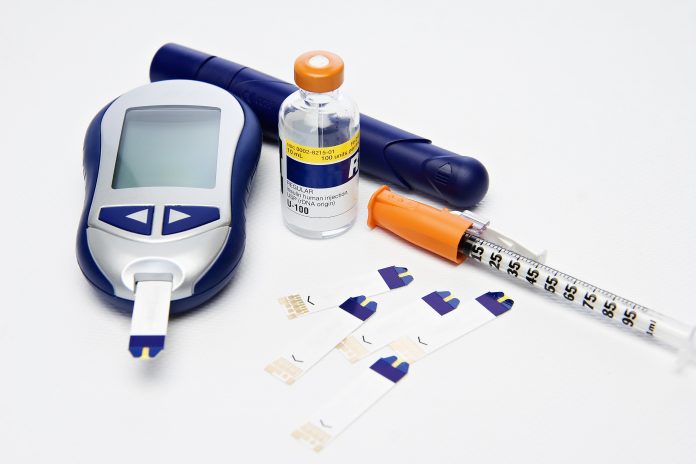Professor Andrew Boulton, President of the International Diabetes Federation, argues that now is the time to tackle the growing diabetes pandemic
Diabetes is rising at an alarming rate. It now impacts 537 million (one in 10) adults worldwide, – an increase of 74 million (16%) over the last two years. Furthermore, there is a growing list of countries where one in five or even more of the adult population is living with diabetes.
These new figures are revealed in the 10th edition of the International Diabetes Federation’s Diabetes Atlas. The Atlas projects that 783 million adults will be living with diabetes by 2045. That’s an estimated 46% increase, compared to the anticipated population growth of 20% over the same period. With such a sharp increase in global prevalence, it’s clear the rising tide of diabetes can no longer be ignored.
Levels of diabetes are spiralling out of control
Insulin was discovered and first used 100 years ago. There has never been a more appropriate time to reflect on the impact of diabetes and highlight the urgent need to improve access to care for the millions affected. I wish I could report that we have witnessed decisive action to tackle the escalating levels of diabetes. Alas, our latest figures indicate that I cannot. Rather, I must assert the message that diabetes is spiralling out of control.
Diabetes presents a significant global challenge to the health and well-being of individuals, families and societies. Almost half of all adults currently living with diabetes are undiagnosed. When diabetes remains undetected or is not adequately addressed, people with diabetes are at higher risk of serious and life- threatening complications, such as heart attack, stroke, kidney failure, blindness and lower-limb amputation. These complications result in a significantly reduced quality of life and result in higher healthcare costs.
Diabetes now ranks among the top 10 causes of global mortality, responsible for an estimated 6.7 million deaths in 2021 – one death every five seconds.
COVID-19 has placed an additional burden on people living with diabetes, making them more susceptible to the worst complications. We are yet to see the impact of lockdowns, shielding and the potential risk of COVID-induced diabetes on population health. There is wide held concern that the pandemic may have caused a further rise in the prevalence of diabetes and its complications that will manifest over the coming years.
The need for greater access to diabetes care
Globally, 88% of adults living with undiagnosed diabetes are in low- and middle-income countries. However, even in high-income countries, almost a third of (29%) people with diabetes have not been diagnosed. Low rates of clinical diagnosis are often a result of insufficient access to healthcare and lower capacity in existing health systems.
Furthermore, 100 years after the discovery of insulin, it is estimated that one in two people with diabetes who need insulin are unable to access or afford it. Left untreated with insulin, type 1 diabetes is fatal. Other fundamental components of diabetes care, such as oral medicines, self-monitoring equipment and supplies, education and psychological support and access to healthy food plus a place to exercise, are also unavailable to many people living with or at risk of diabetes across the world.
Not enough is being done to prevent diabetes and its complications and provide the best available care to people affected.
What needs to be done to turn the tide?
Fortunately, much can be done to reduce the impact of diabetes. Evidence suggests that type 2 diabetes can often be prevented, while early diagnosis and access to appropriate care for all types of diabetes can avoid or delay complications in people living with the condition.
We must secure affordable access to the fundamental components of diabetes care for all who need them, ensure prompt diagnosis and timely treatment, and improve efforts to prevent type 2 diabetes.
I believe there are some rays of hope. The centenary of insulin has attracted greater attention to the diabetes cause. Last year, the World Health Organization launched the Global Diabetes Compact, and United Nations Member States adopted a Resolution that calls for urgent coordinated global action to tackle diabetes.
These are important steps towards addressing the continued and rapid rise of diabetes prevalence, particularly in countries that do not have a national diabetes plan or coverage for essential health services. But more action is needed. We cannot wait any longer for diabetes medicine, technologies, support and care to be made available to all that require them. Because, if not now, when?
Key findings from the 10th edition of IDF Diabetes Atlas include:
• One in 10 (10.5%) adults around the world are currently living with diabetes.
• The total number is predicted to rise to 643 million (11.3%) by 2030 and to 783 million (12.2%) by 2045.
• An estimated 44.7% of adults living with diabetes (240 million people) are undiagnosed.
• Over four in five (81%) people with diabetes live in low- and middle-income countries.
• Diabetes was responsible for an estimated $966 billion in global health expenditure in 2021. This represents a 316% increase over the last 15 years.
• Excluding the mortality risks associated with COVID-19, approximately 6.7 million adults are estimated to have died due to diabetes or its complications in 2021. That’s more than one in ten (12.2%) of global deaths from all causes.
• 541 million adults, or 10.6% of adults worldwide, have impaired glucose tolerance (IGT), placing them at high risk of developing type 2 diabetes.
More data from the IDF Diabetes Atlas 2021 is available at diabetesatlas.org.











